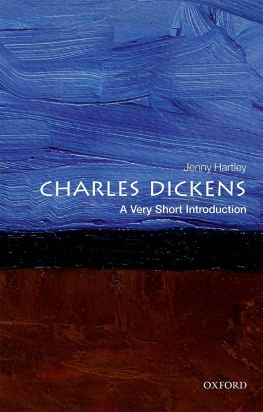The Complete Short Stories
For the first time, the complete short fiction of L.P. Hartley is included in one volume. A novelist whose work has been acclaimed for its consistent quality, he also produced a number of masterly executed short stories. Those stories, written under the collection titles of The Travelling Grave, The White Wand, Two for the River, and Mrs. Carteret Receives are in this edition, as is the flawless novella Simonetta Perkins.
Leslie Poles Hartley was born in 1895 and died in 1972. Of his eighteen novels, the best known are The Shrimp and the Anemone, Eustace and Hilda, The Go-Between, The Boat, The Hireling, The Brickfield, Poor Clare, The Love Adept, and My Sisters Keeper. The Go-Between, when filmed, was an international success, and the film version of The Hireling won the principal award at the 1973 Cannes festival.
(to The Collected Short Stories of L. P. Hartley, 1968)
The author of The Go-Between is one of the most distinguished of modern novelists; and one of the most original. For the world of his creation is composed of such diverse elements. On the one hand he is a keen and accurate observer of the processes of human thought and feeling, especially of its queerer and more whimsical processes: he is also a sharp-eyed chronicler of the social scene. But his picture of both is transformed by the light of a Gothic imagination that reveals itself now in a fanciful reverie, now in the mingled dark and gleam of a mysterious light and a mysterious darkness. Further, both observation and imagination are given significance by the fact that they are made the vehicle of an intense moral vision. It is not a comfortable vision. Man, as seen by Mr. Hartley, is born with a soul that instinctively desires virtue and happiness. But some original sin in himself and in the nature of things is at work to thwart his strivings towards them and brings them, more often than not, to disastera disaster he accepts as largely deserved.
Such is the vision of life presented in Mr. Hartleys novels. We find it also in this volume of his collected short stories. With a difference however. In the novels the diverse elements are fused into a single whole; in the stories, one or other tends to dominate. In some the Gothic strain in its authors talent gets it head, as it never does in the novels. Like his eighteenth-century forebears, Mr. Hartley goes in for tales of terror. Sometimes the terror is earthly: The Island, The Killing Bottle, The Travelling Grave are stories of crime. More often the terror is unearthly, an affair of the supernatural. But both earthly and unearthly are steeped in the same atmosphere of eerie and sinister evil. Perhaps this atmosphere suits the unearthly stories best; now and again Mr. Hartleys criminals are too like evil spirits to be wholly convincing as human beings. There is no difficulty, however, in believing in his ghosts. They and their stories assault the imagination with the compelling horror of nightmare. Yet like that of nightmare, their horror is founded on waking experience. For though Mr. Hartleys sense of reality plays a subordinate part in these stories, it is effectively there. The nightmare events are more terrifying because they are interspersed with details drawn from their authors exact and humorous observations of the real world. Rumbold, in A Visitor from Down-Under, listens to a programme for children on the wireless, ignorant that it will soon be the medium by which he is brought into communication with the ghost of the man he has murdered.
. . . A Childrens Party, the voice announced in an even, neutral tone, nicely balanced between approval and distaste, between enthusiasm and boredom; six little girls and six little (a faint lift in the voice, expressive of tolerant surprise) boys. The Broadcasting Company has invited them to tea, and they are anxious that you should share some of their fun. (At the last word the voice became completely colourless.)
After this it is the ghosts turn to take over: and his intervention is all the more macabre by contrast with what has gone before.
Mr. Hartleys moral preoccupations also have their place in his tales of terror. His ghosts are never inexplicable elementals, but spirits of vengeance or manifestations of spiritual evil. This moral element in his tales give them a disturbing seriousness not to be found in the ordinary ghost story. Like those of Henry James and Walter De La Mare, they are parables of their authors profounder beliefs.
Mr. Hartleys Gothic imagination predominates then in one section of his stories; others display his interest in the by-ways of human psychology. He is much concerned with neurotic compulsion and neurotic frustration. Oswald Clayton in Witheling End suffers from strong compulsive fits of constraint which have the effect of blighting all his friendships: Mr. Amber in A Tonic is possessed by a frustrating fear of death that stops him telling his symptoms to the specialist he has gone to consult, lest they should reveal that his disease is fatal. Akin to these tales, but standing apart from them, is the brief novel called Simonetta Perkins, in which is described the gradual steps by which the fastidious and sophisticated Miss Johnson of Boston finds her carefully preserved philosophy of living compulsively undermined by a violent physical passion.
Mr. Hartleys pictures of these different psychological troubles is wonderfully convincing and his insight into the working of neurosis alarmingly acute. But it is always the insight of an artist. His interest is imaginative, not clinical; these stories are not mere efficient studies in morbid psychology. For we see them through the transfiguring medium of Mr. Hartleys subtle ironic temperament. Here is the hypochondriac Mr. Amber waiting to see the specialist.
Mr. Amber strayed into the waiting-room and sat down in the middle of an almost interminable sofa. On either hand it stretched away, a sombre crimson expanse figured with rather large fleurs-de-lys and flanked by two tight bolsters that matched the sofa, and each other. The room had heavy Oriental hangings, indian-red, and gilt French chairs, upholstered in pink. A mixture of incompatibles, thought Mr. Amber, is contrary to the traditional usages of pharmacy, but in practice it may sometimes be not inadmissible. His mind was sensitive to its environment.
Finally Mr. Hartleys sympathetic imagination enables him to endow his psychological cases with a more universal interest, Clayton and Amber and the rest of his frustrated heroes are revealed as representatives of the human condition. Their particular quirks may be odd and even ridiculous, but they are only comical examples of the kind of weakness that afflicts all of us. As I have said, Mr. Hartley does not take a hopeful view of the human lot. Most of his dramas end in frustration if not in anything worse; and if Oswald Clayton and one or two others do contrive to extract themselves from their troubles, it is through a chance stroke of luck. The one story in the collection that ends well, in the full sense of the word, is the delicate little anecdote called The Price of the Absolute. Its last paragraph sees Timothy Carswell going off with the Celadon vase which he has so recklessly purchased, in a state of confident rapture; for he feels himself to be the possessor of Absolute Beauty incarnate. Can this mean, we wonder, that Mr. Hartley thinks that art is to be trusted even if life is not? that the experience given by a work of art can be perfect, in a way that an experience given by life never is? Such an implication seems implicit in the tone with which he describes the vase.













